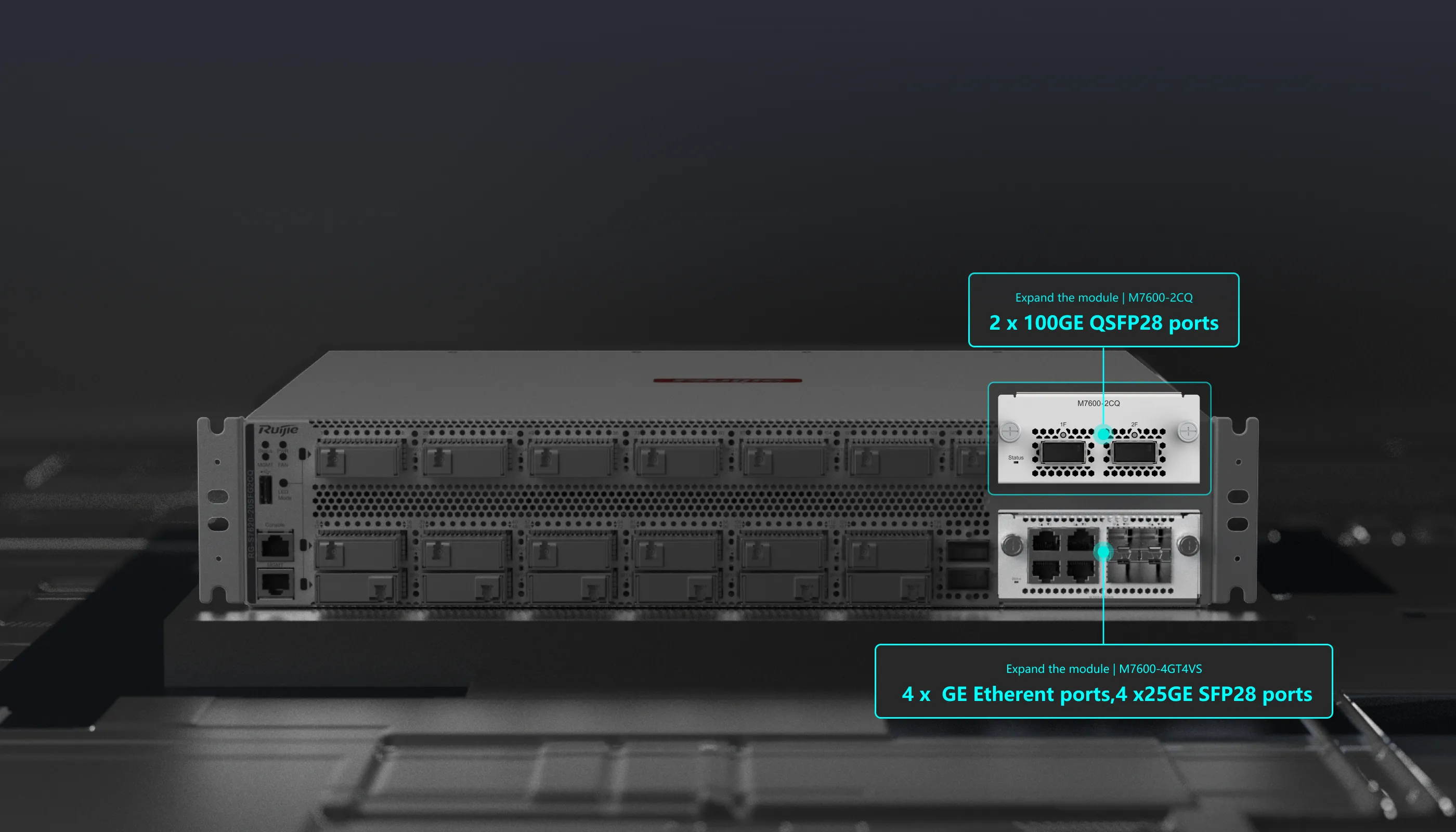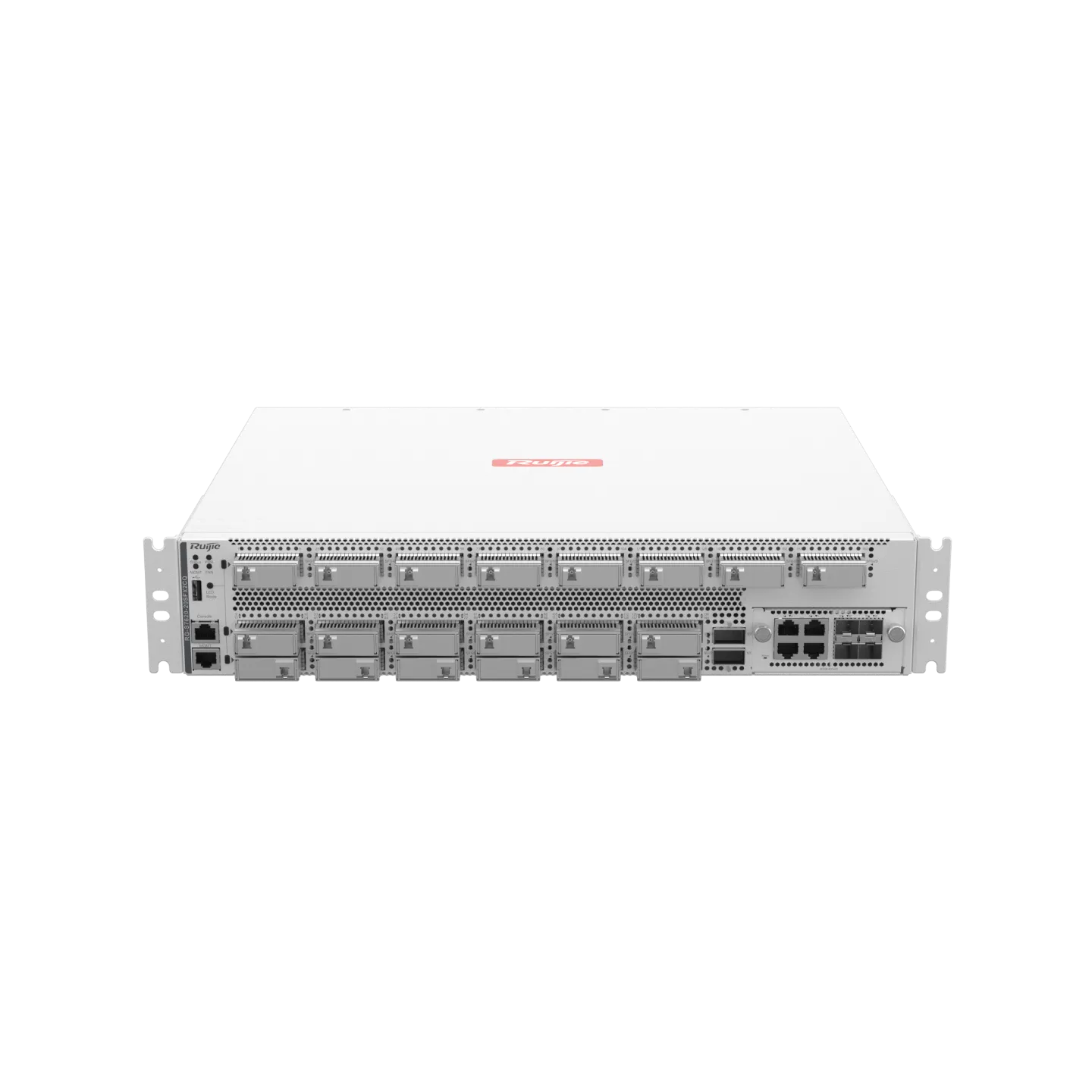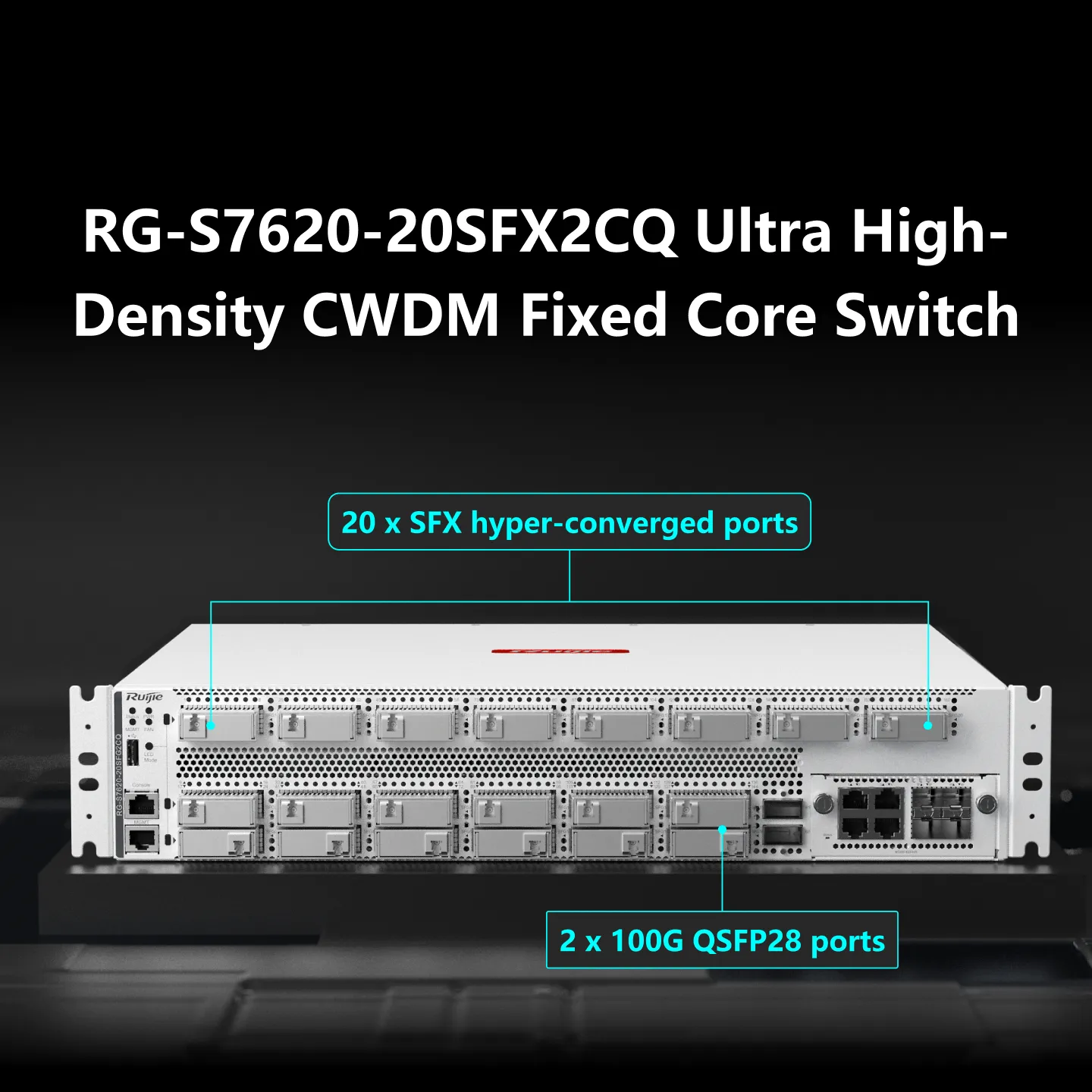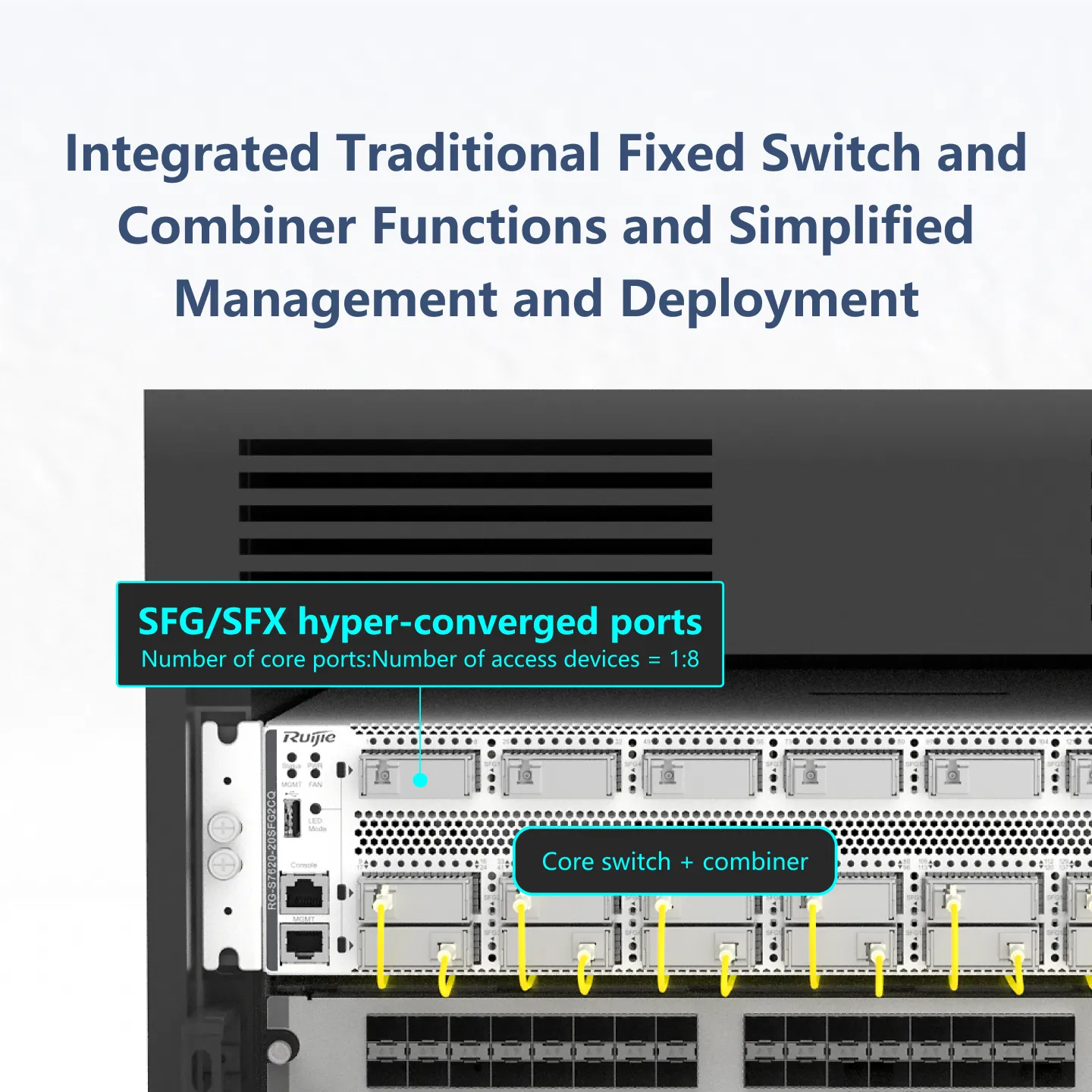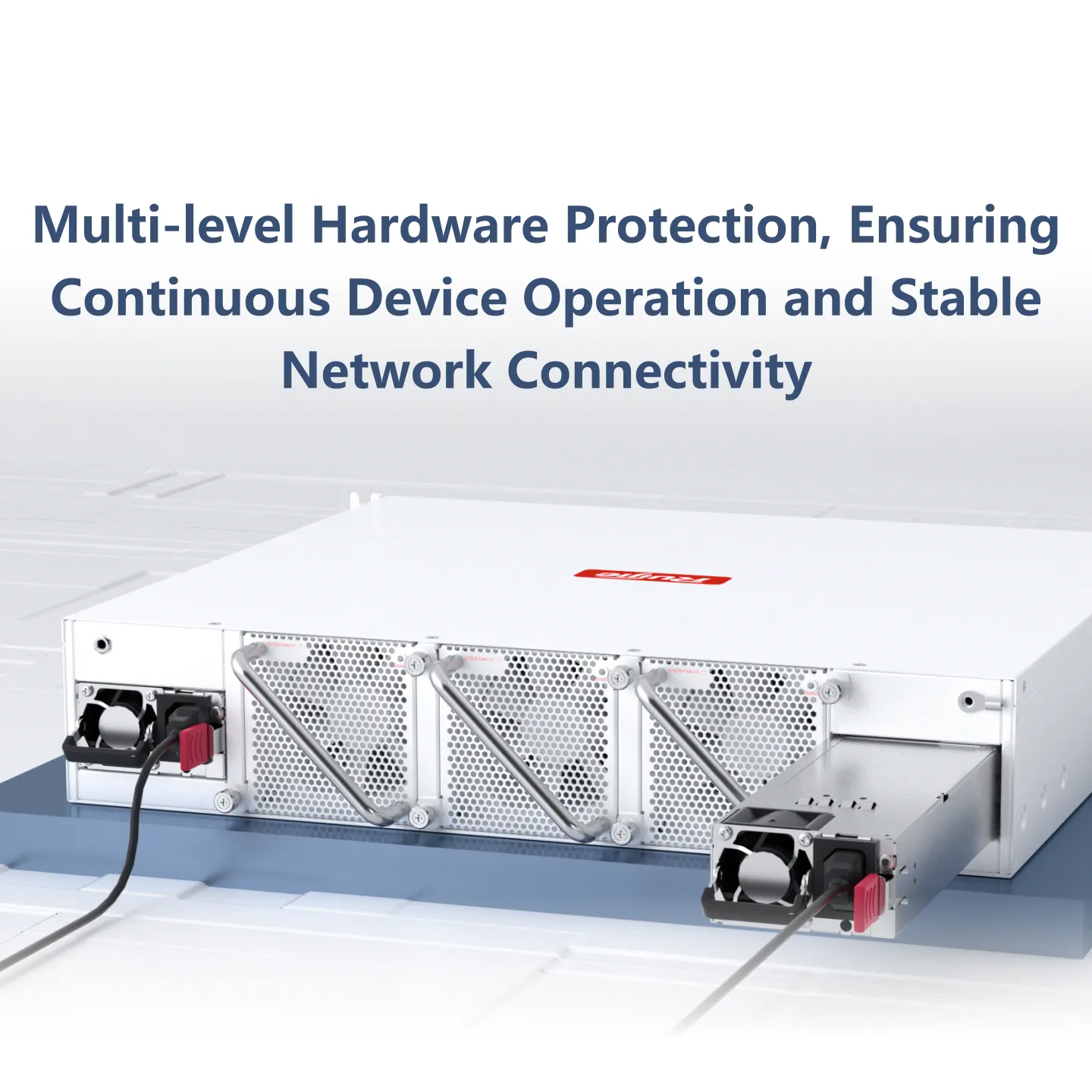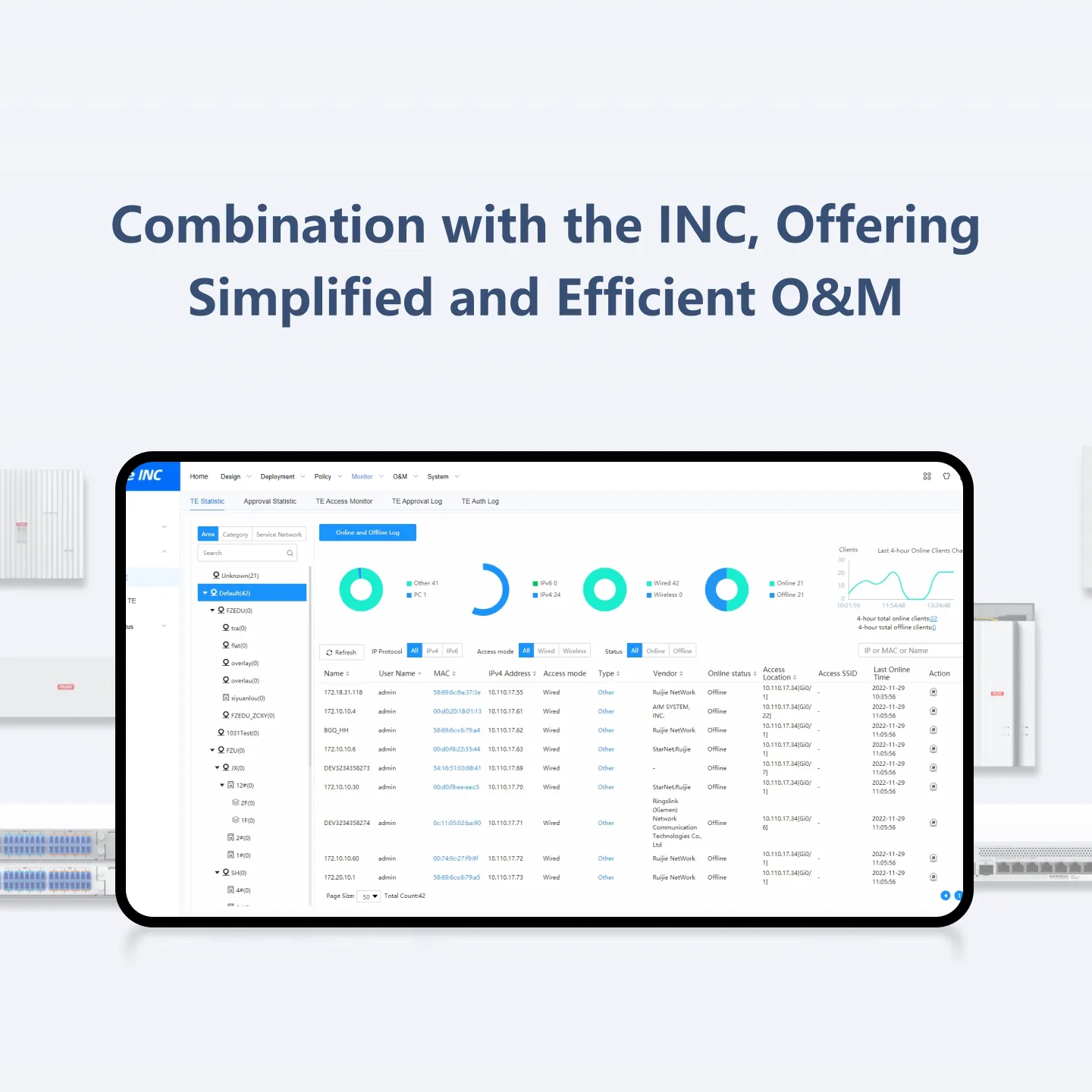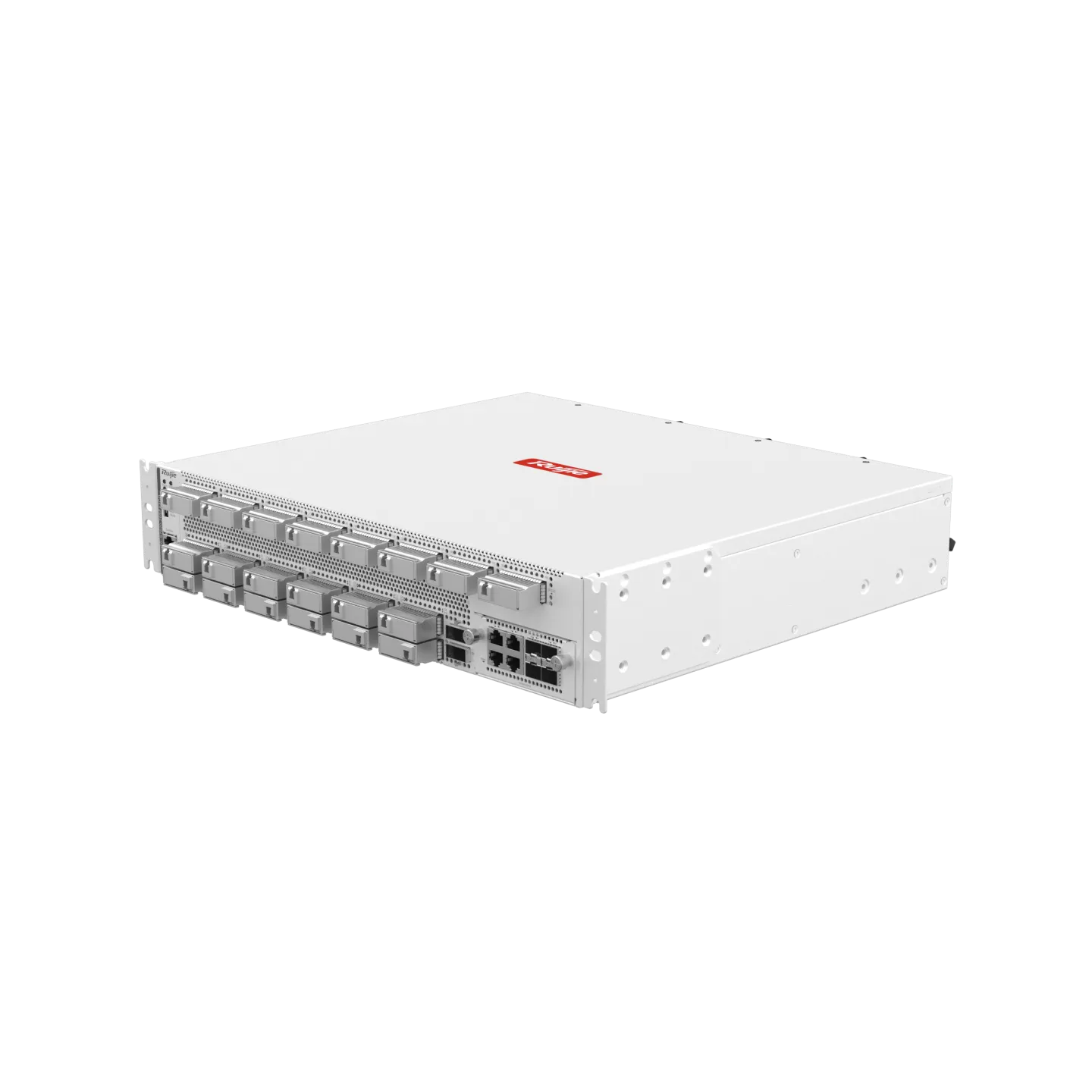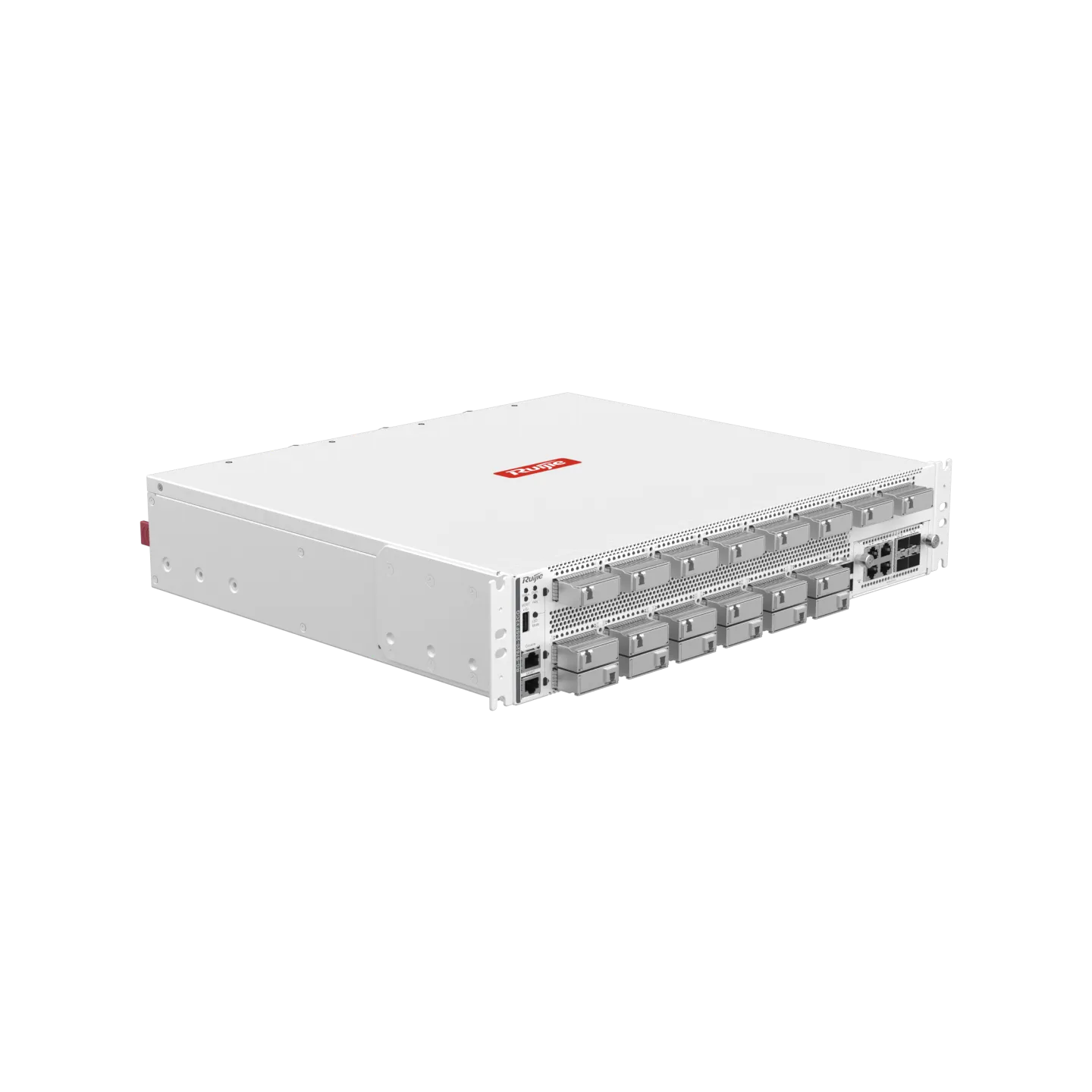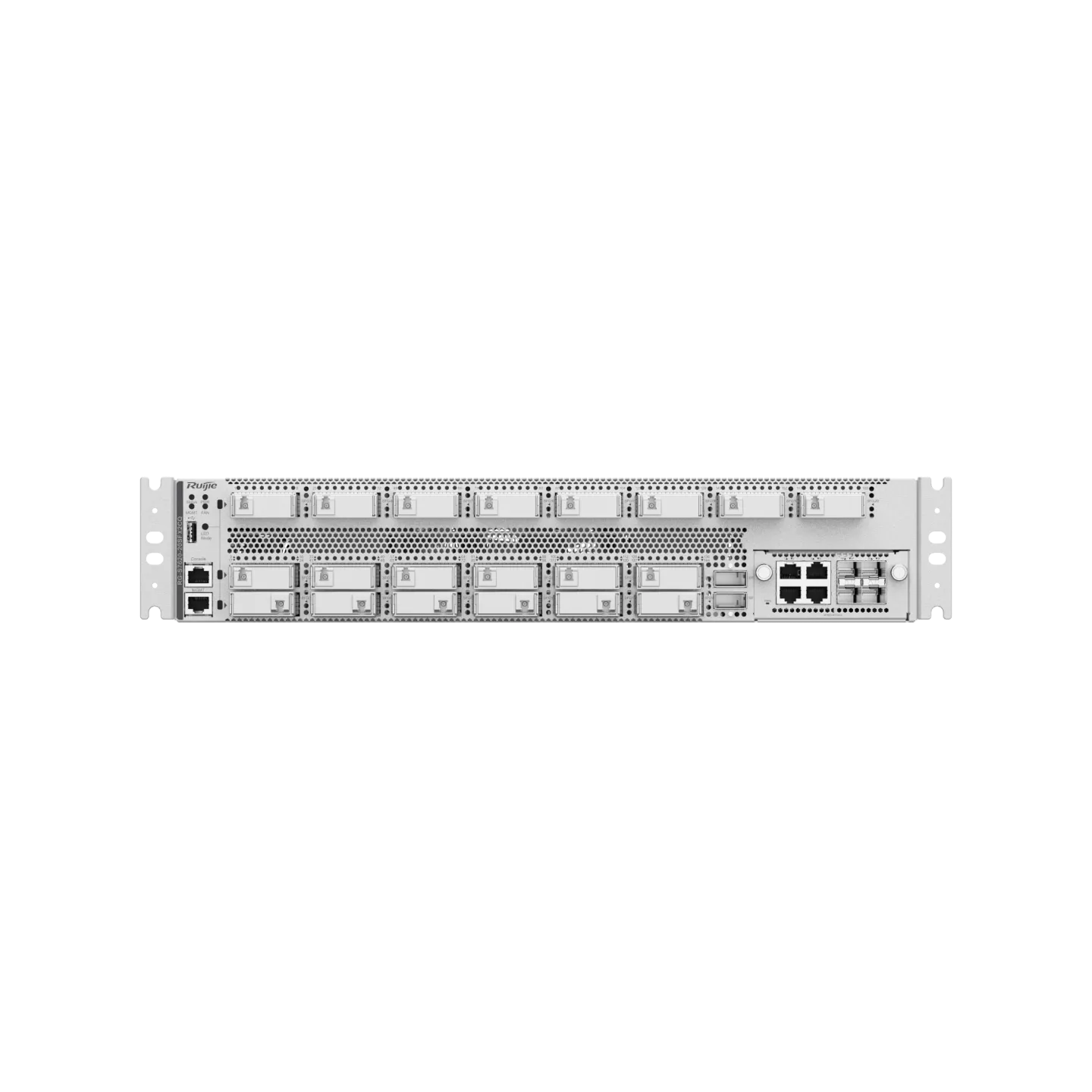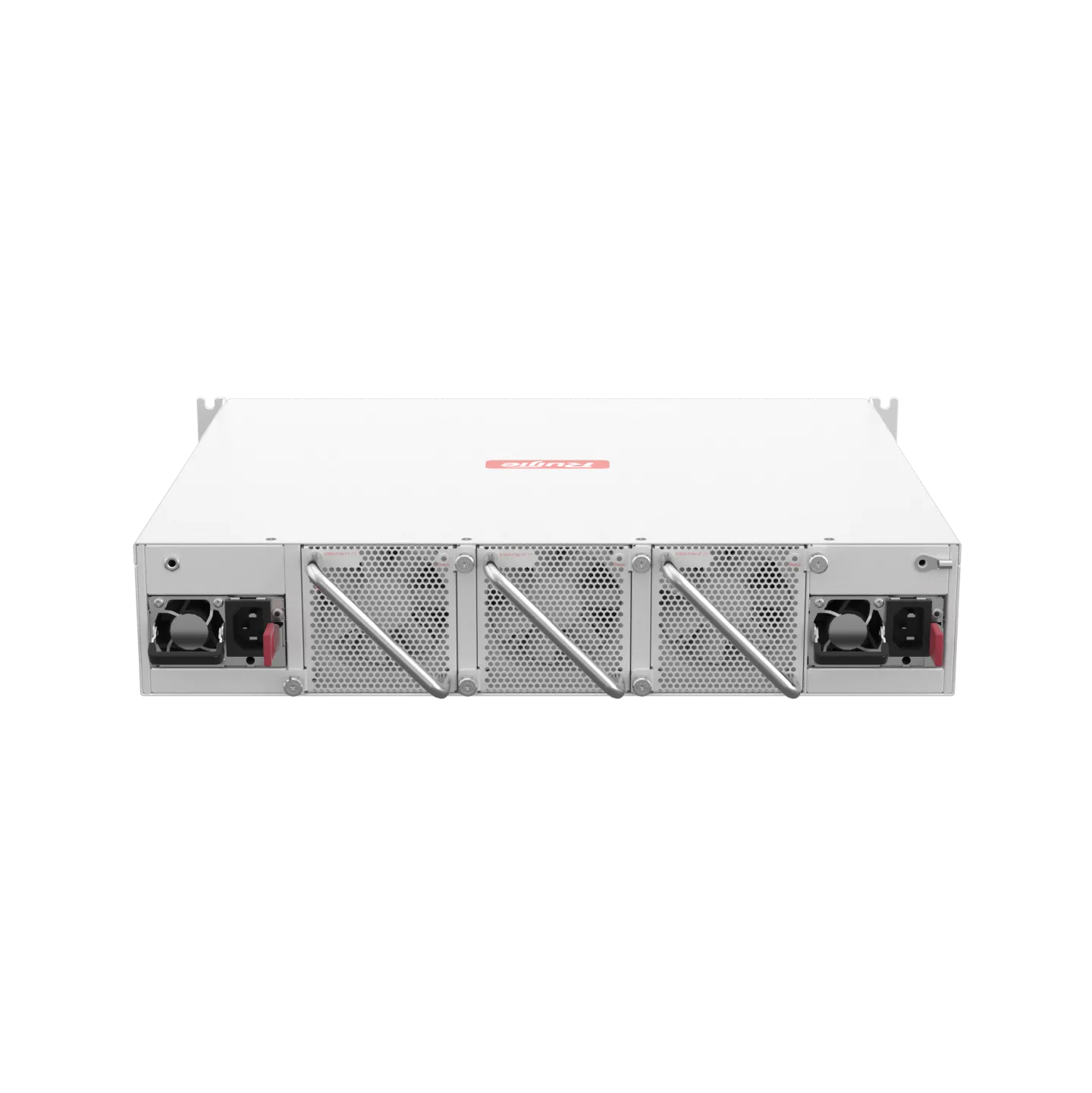| Device Model |
RG-S7610-10SFG2CQ |
RG-S7610-10SFX2CQ |
RG-S7620-20SFG2CQ |
RG-S7620-20SFX2CQ |
| Ethernet switching |
Jumbo frame (maximum length: 9,216 bytes) |
| Maximum number of VLANs that can be created: 4,094 |
| Voice VLAN |
| Super-VLAN and private VLAN |
| MAC address-based, port-based, protocol-based, and IP subnet-based VLAN assignment |
| GVRP |
| Basic QinQ and selective QinQ |
| STP (IEEE 802.1.d), RSTP (IEEE 802.1w), and MSTP (IEEE 802.1s) |
| ERPS (G.8032) |
| LLDP/LLDP-MED |
| IP service |
Static ARP |
| DHCP client |
| DHCP relay |
| DHCP server |
| DHCP snooping |
| DHCPv6 server, DHCPv6 client, DHCPv6 relay, and DHCPv6 snooping |
| Neighbor Discovery (ND) and ND snooping |
| GRE tunnel |
| IP routing |
IPv4/IPv6 static routing |
| RIP and RIPng |
| OSPFv2 and OSPFv3 Graceful restart (GR) |
| IPv4 IS-IS IPv6 IS-IS |
| BGP4 and BGP4+ |
| IPv4/IPv6 VRF |
| IPv4/IPv6 PBR |
| Multicast |
IGMPv1/v2/v3 |
| IGMPv1/v2/v3 snooping |
| IGMP fast leave |
| PIM-SM |
| PIM-DM |
| PIM-SSM for IPv4 and IPv6 |
| MSDP to achieve inter-domain multicast |
| MLDv1 and MLDv2 |
| MLD snooping |
| PIM-SMv6 |
| Multicast source IP address check Multicast source port check |
| Multicast querier |
| MPLS |
6PE/6VPE model interconnection with the IPv4/IPv6 MPLS backbone network |
| MPLS MIB (RFC 1273, RFC 4265, and RFC 4382) (MPLS MIB, MPLS L3VPN STD MIB, MPLS LSR STD MIB, and MPLS VPN MIB) |
| ACL and QoS |
Standard IP ACLs (hardware ACLs based on IP addresses) |
| Extended IP ACLs (hardware ACLs based on IP addresses or TCP/UDP port numbers) |
| Extended MAC ACLs (hardware ACLs based on source MAC addresses, destination MAC addresses, and optional Ethernet type) |
| Expert-level ACLs (hardware ACLs based on the source and destination IP addresses and ports, and protocol type) |
| IPv6 ACL |
| ACL 80 |
| Expert-level ACLs (hardware ACLs based on |
| ACL redirection |
| Port-based rate limiting |
| Traffic classification based on 802.1p priorities, DSCP priorities, and IP precedences |
| Congestion management: SP, WRR, DRR, WFQ, SP+WRR, SP+DRR, and SP+WFQ |
| Congestion avoidance: tail drop, RED, and WRED |
| Eight queues on each port |
| Security |
Multiple AAA modes |
| RADIUS authentication and authorization |
| TACACS+ |
| IEEE 802.1X authentication, MAC address bypass (MAB) authentication, and interface-based and MAC address-based 802.1X authentication |
| Web authentication |
| Hypertext Transfer Protocol Secure (HTTPS) |
| SSHv1 and SSHv2 |
| Global IP-MAC binding |
| Port security |
| IP source guard |
| SAVI |
| ARP spoofing prevention |
| CPP and NFPP |
| Various attack defense functions including NFPP, ARP anti-spoofing, DHCP/DHCPv6 attack defense, ICMP attack defense, ND attack defense, IP scanning attack defense, and customizing attack defense packet types |
| Loose and strict RPF uRPF ignoring default routes |
| Reliability |
REUP |
| Rapid Link Detection Protocol (RLDP), Layer 2 link connectivity detection, unidirectional link detection, and VLAN-based loop control |
| Data Link Detection Protocol (DLDP) |
| IPv4 VRRP v2/v3 and IPv6 VRRP v3 |
| BFD |
| Link monitoring, fault notification, and remote loopback based on 802.3ah (EFM) |
| Hot swapping of power modules and fan modules |
| Device Virtualization |
VSU |
| NMS and Maintenance |
RSPAN and ERSPAN |
| sFlow (network detection technology based on packet sampling, which is mainly used for traffic statistics and analysis in heavy-traffic scenarios) |
| NTP and SNTP |
| FTP and S TFTP |
| SNMP v1/v2/v3 |
| RMON (1, 2, 3, 9) Various types of RMON groups, including event groups, alarm groups, history groups, and statistics groups, as well as private alarm extension groups |
| NETCONF |
| CWMP |
| gRPC |
| OpenFlow Special 1.0/1.3 Flow table analysis defined by all protocols Transmission of specified packets to the controller Configuring the controller's IP address and port Notifying port status changes to the controller |
| VXLAN |
EVPN VXLAN tunnel establishment VLAN access to VXLAN IPv4 over IPv4 Distributed gateway IPv6 over IPv4 Using an SVI to connect to the VXLAN network Using a routed interface to connect to the VXLAN network Proxy ARP (replying with the actual MAC address)) ND proxy (replying with the actual MAC address) ND reply (replying with the actual MAC address) VXLAN EVPN VXLAN static route Anycast gateway VXLAN bridging mode VXLAN routing mode Proxy ARP (replying with the gateway MAC address) Configuring the UDP port number in VXLAN packets Static VXLAN tunnel creation |
